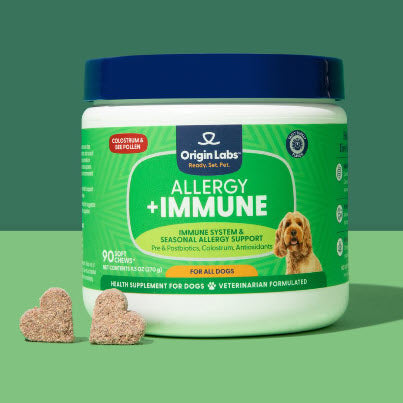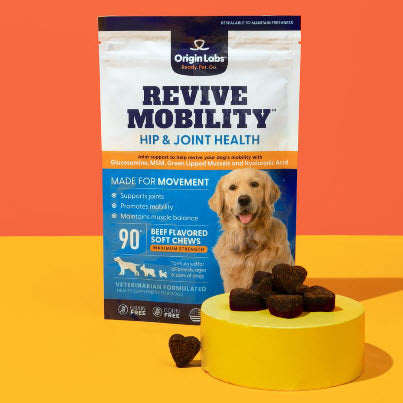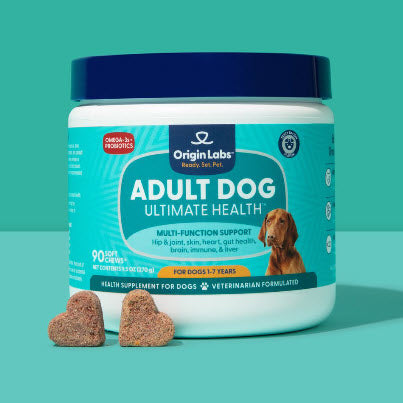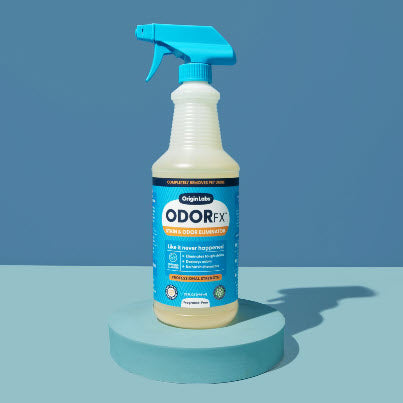Introduction
Feeding pizza crust to dogs is a topic many pet owners find themselves contemplating. While sharing our favorite foods with our furry friends might seem harmless, it's crucial to understand what is safe for them to eat.
Dogs have different dietary needs compared to humans, and certain human foods can be harmful or even toxic. The key takeaway here is the importance of knowing which foods are suitable for your dog's consumption. In this article, we will explore whether or not it is safe for dogs to consume pizza crust and discuss the potential risks involved.
To provide a well-rounded understanding, we'll delve into:
- The ingredients in pizza crust
- Potential dangers of feeding pizza crust to dogs
- Harmful components in pizza aside from the crust
- Safe alternatives to satisfy your dog's cravings
By the end of this guide, you'll be well-equipped to make informed decisions about your dog's diet. Before diving in, if you're looking for tailored health support for your dog at any stage of life, consider checking out Ultimate Health chews for senior dogs and Ultimate Health supplements for puppies from Origin Labs. These products are specifically formulated with your dog's age in mind and provide the necessary health support they need as they grow.
Understanding Pizza Crust and Its Ingredients
What Exactly is Pizza Crust and How Is It Made?
Pizza crust forms the foundation of any pizza, providing the base upon which all other ingredients are added. Typically made from a simple dough, pizza crust involves combining flour, water, yeast, and salt. The dough is then kneaded to develop gluten, which gives the crust its chewy texture. After rising, the dough is shaped into a flat disc and baked until it reaches a desired level of crispiness.
Common Ingredients Found in Pizza Crust
While the basic composition of pizza crust includes flour, water, yeast, and salt, additional ingredients can be incorporated for flavor and texture. Here are some common additions:
- Olive Oil: Enhances the flavor and helps in browning the crust.
- Sugar: Accelerates yeast activity and adds a slight sweetness.
- Garlic Powder: Adds a savory taste.
- Herbs: Such as oregano or basil for added aroma.
Garlic and Onions: Toxicity to Dogs
One critical consideration when thinking about feeding pizza crust to dogs is the presence of ingredients like garlic and onions. These substances are toxic to dogs and can cause serious health issues.
Garlic
Garlic contains compounds called thiosulfates, which can damage red blood cells in dogs leading to hemolytic anemia. Symptoms of garlic toxicity include:
- Vomiting
- Diarrhea
- Lethargy
- Elevated heart rate
Even small amounts of garlic powder in pizza crust can pose a risk.
Onions
Onions share similar toxic compounds with garlic. Ingesting onions can lead to oxidative damage to red blood cells in dogs. Signs of onion poisoning include:
- Weakness
- Pale gums
- Decreased appetite
- Fainting
Given these potential health risks, it’s clear that any pizza crust containing garlic or onion should be avoided when it comes to feeding your dog.
For those looking to ensure their dog's overall well-being, consider exploring Ultimate Health chews for adult dogs. These specially formulated chews provide support tailored to your dog's age.
Understanding the composition of pizza crust and recognizing harmful ingredients like garlic and onions underscores why it's crucial to be cautious about what we share with our canine friends.
Can Dogs Eat Pizza Crust? The Risks Explained
Feeding pizza crust to dogs can be dangerous. It's important for pet owners to know the risks involved so they can make informed decisions about their dog's diet.
Potential Dangers of Feeding Pizza Crust to Dogs
- Digestive Issues: Dogs have sensitive stomachs, and eating pizza crust can cause problems like gas and bloating. The high carbohydrate content and gluten in pizza crust can be difficult for dogs to digest, leading to discomfort and potential gastrointestinal upset.
- Weight Gain: Pizza crust is high in carbs and calories, so giving it to your dog regularly can make them gain weight unnecessarily. Over time, this can contribute to obesity, which is a significant health concern for dogs. Obesity increases the risk of various conditions, including joint issues, diabetes, and heart disease.
Specific Risks Associated with Pizza Crust Consumption for Dogs
- Stomach Pain: Some ingredients in pizza crust, like garlic and onions, can upset a dog's stomach and make them feel uncomfortable.
- Pancreatitis Risk: Pancreatitis is when the pancreas becomes inflamed, usually from eating too much fatty food. Pizza crusts with cheese or oil are fatty and can increase the risk of pancreatitis in dogs.
- Obesity Development: Eating high-calorie foods like pizza crusts over a long period can make dogs obese, which leads to health problems like diabetes and joint issues.
Why Moderation Is Important
While it might be tempting to share a tasty treat like pizza crust with your dog once in a while, it's crucial to do so in moderation. Here's why:
- Portion Control: If you do decide to give your dog some pizza crust, make sure it's only a small piece. Giving them too much can quickly lead to the health issues mentioned above.
- Frequency: Treats should be given sparingly. It's best to avoid regularly feeding your dog human foods like pizza crust so they can maintain a balanced diet.
- Observation: Always keep an eye on how your dog reacts after trying any new food. Look out for signs of stomach problems or allergies.
Remember, dogs may enjoy the taste of pizza crust, but their bodies aren't built to handle it like ours are. Being mindful of their nutritional needs is essential for keeping them healthy in the long run.
By understanding the potential dangers of pizza crust for dogs and being careful about how often and how much you give them, you can make better choices for their overall well-being.
Other Harmful Ingredients in Pizza for Dogs
When it comes to the question of toxic pizza ingredients for dogs, the crust isn't the only concern. Several other components of a typical pizza can pose significant health risks for our furry friends.
Cheese
Cheese is a common ingredient in pizza, and while it might seem harmless, it can cause problems for dogs. Many dogs are lactose intolerant, meaning they lack the enzyme needed to break down lactose, the sugar found in milk and dairy products. Feeding cheese to a lactose-intolerant dog can lead to:
- Digestive Issues: Symptoms such as diarrhea, gas, and bloating.
- Stomach Pain: Discomfort and cramping due to improper digestion of lactose.
Even if your dog isn't lactose intolerant, cheese is high in fat. High-fat foods can contribute to weight gain and increase the risk of pancreatitis, an inflammation of the pancreas that can be very painful and potentially life-threatening.
Salt
Pizza is also loaded with salt, which is another ingredient that can be harmful to dogs. High sodium intake can lead to several health issues:
- Dehydration: Excessive salt causes increased thirst and urination.
- Salt Poisoning: Symptoms include vomiting, diarrhea, depression, tremors, elevated body temperature, seizures, and even death in severe cases.
Dogs have a much lower tolerance for salt compared to humans. The high salt content in pizza exacerbates these risks significantly.
Other Ingredients
Beyond cheese and salt, there are additional components often found in pizza that can be dangerous for dogs:
- Garlic and Onions: Even small amounts of garlic and onions can damage a dog's red blood cells, leading to hemolytic anemia. This condition reduces oxygen flow throughout the body and can cause lethargy, weakness, and breathing difficulties.
- Spices and Seasonings: Ingredients like black pepper or chili flakes can irritate a dog's digestive system.
Hidden Dangers
Many pizzas contain processed meats like pepperoni or sausage. These meats not only contain high levels of fat but are also packed with preservatives and additional sodium. Consuming these processed meats regularly could contribute significantly to long-term health issues such as obesity and heart disease.
Considering these points about toxic pizza ingredients for dogs, it's clear that many aspects of this popular food pose risks beyond just the crust. Whether it's the potential for digestive upset from cheese or the dangers associated with high sodium intake, it's crucial to keep these elements away from your dog's diet.
Safe Alternatives to Fulfill Your Dog's Cravings
When pizza crust is off-limits, there are plenty of healthier options to satisfy your dog's cravings. Here are some dog-friendly alternatives to pizza crust that can keep your furry friend happy and healthy:
Homemade Dog Treats
Preparing homemade dog treats offers several benefits:
- Control Over Ingredients: You can ensure that no harmful ingredients, such as garlic or onions, are included.
- Nutritional Value: Homemade treats can be packed with nutritious ingredients tailored to your dog's dietary needs.
- Freshness and Quality: Homemade treats are free from preservatives and other additives commonly found in commercial pet snacks.
Recipe Ideas:
- Peanut Butter BiscuitsIngredients: Whole wheat flour, peanut butter (unsweetened and unsalted), eggs, water.
- Instructions: Mix all ingredients until dough forms, roll out and cut into shapes. Bake at 350°F for 20 minutes.
- Sweet Potato ChewsIngredients: Sweet potatoes.
- Instructions: Slice sweet potatoes into thin strips and bake at 250°F for 2-3 hours until they are dried and chewy.
Nutritious Snacks
In addition to homemade treats, there are several safe snacks for dogs that make excellent alternatives to pizza crust:
Vegetables
- Carrots
- Green beans
- Cucumbers
- Bell peppers (ensure they are seedless)
Fruits
- Apples
- (seeded)
- Blueberries
- Watermelon
- (seedless)
- Bananas
These options not only provide essential vitamins and minerals but also help maintain a balanced diet for your dog.
Benefits of Nutritious Snacks
- Low-Calorie Options: Many vegetables and fruits are low in calories, making them ideal for maintaining a healthy weight.
- Hydration: High-water content in certain fruits like watermelon helps keep your dog hydrated.
- Digestive Health: Fiber-rich foods like carrots can aid in digestion.
Exploring these alternatives ensures that your dog enjoys tasty treats without the risks associated with pizza crust. This approach promotes a healthier lifestyle while still catering to their cravings.
Conclusion
Ensuring your dog's well-being involves being mindful of their diet and steering clear of potentially harmful foods like pizza crust. While the occasional piece might seem harmless, the health effects of pizza on dogs can be significant, ranging from digestive issues to more severe conditions like pancreatitis and obesity.
Always consult a veterinarian for personalized advice regarding your dog's nutrition. They can provide tailored recommendations that consider your pet's age, breed, weight, and any existing health conditions.
Key Takeaways:
- Avoiding foods that are not specifically designed for dogs helps prevent health complications.
- Can dogs eat pizza crust? It's best to err on the side of caution and offer healthier alternatives instead.
- Prioritize your dog's health with nutritious snacks that are both safe and satisfying.
Taking these steps ensures a happier, healthier life for your furry friend.
FAQs (Frequently Asked Questions)
Can dogs have pizza crust?
Feeding pizza crust to dogs can pose potential risks, including digestive issues and weight gain. It's important to understand the composition of pizza crust and the ingredients it contains before considering sharing it with your dog.
What are the harmful ingredients in pizza for dogs?
In addition to the crust, cheese and salt are also potentially harmful to dogs. Cheese can cause lactose intolerance issues, while high sodium intake from pizza can have negative effects on a dog's health.
Are there safe alternatives to fulfill your dog's cravings for pizza crust?
Yes, there are healthier options for satisfying your dog's cravings, such as homemade dog treats and nutritious snacks like vegetables and fruits. These alternatives can provide a safe and enjoyable experience for your dog without the potential risks associated with pizza crust consumption.
What are the health impacts of pizza on dogs?
Feeding pizza to dogs can lead to stomach pain, pancreatitis risk, and obesity development. It's crucial to be mindful of their diet and avoid potentially harmful foods like pizza crust. Consulting with a veterinarian for personalized advice regarding your dog's nutrition is highly encouraged.
What exactly is pizza crust and how is it made?
Pizza crust is typically made from flour, water, yeast, salt, and oil. It is essential to be aware of the composition of pizza crust and the common ingredients it contains in order to understand its potential impact on a dog's health.
Is moderation important when feeding dogs pizza crust?
Yes, moderation is crucial when considering sharing any human food, including pizza crust, with your dog. Overconsumption of pizza crust can lead to digestive issues and weight gain in dogs. It's best to provide healthier alternatives in moderation to fulfill your dog's cravings.








